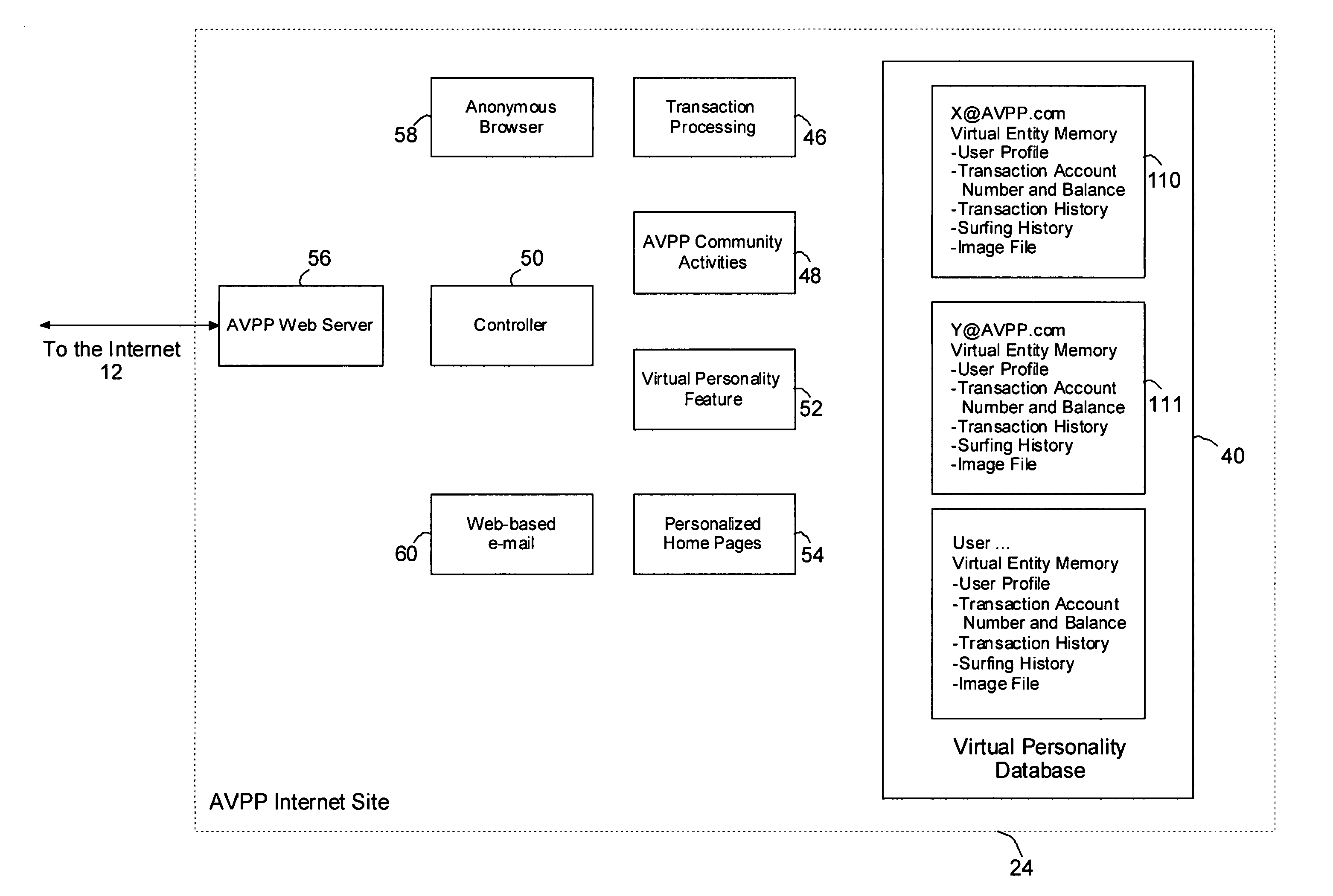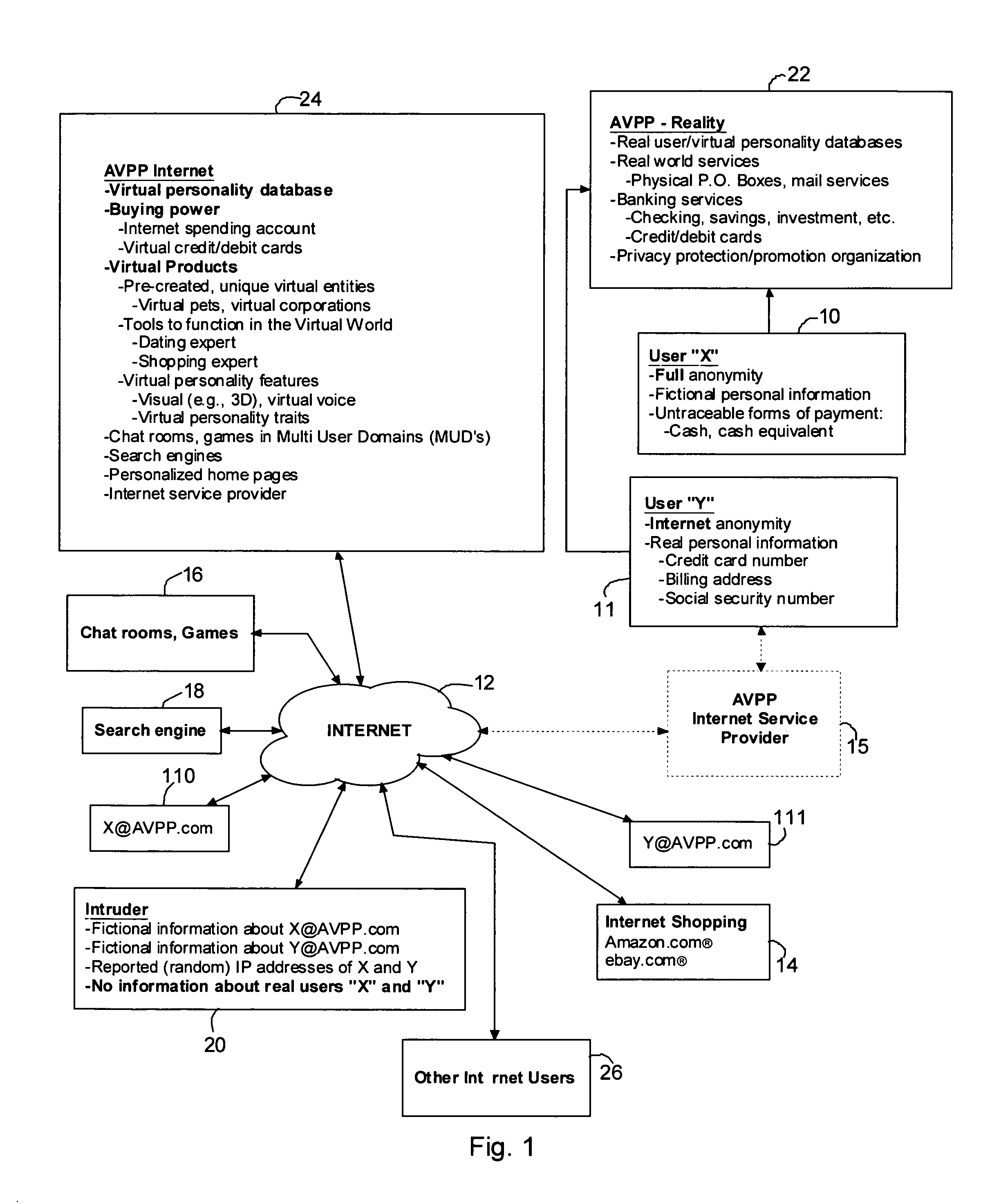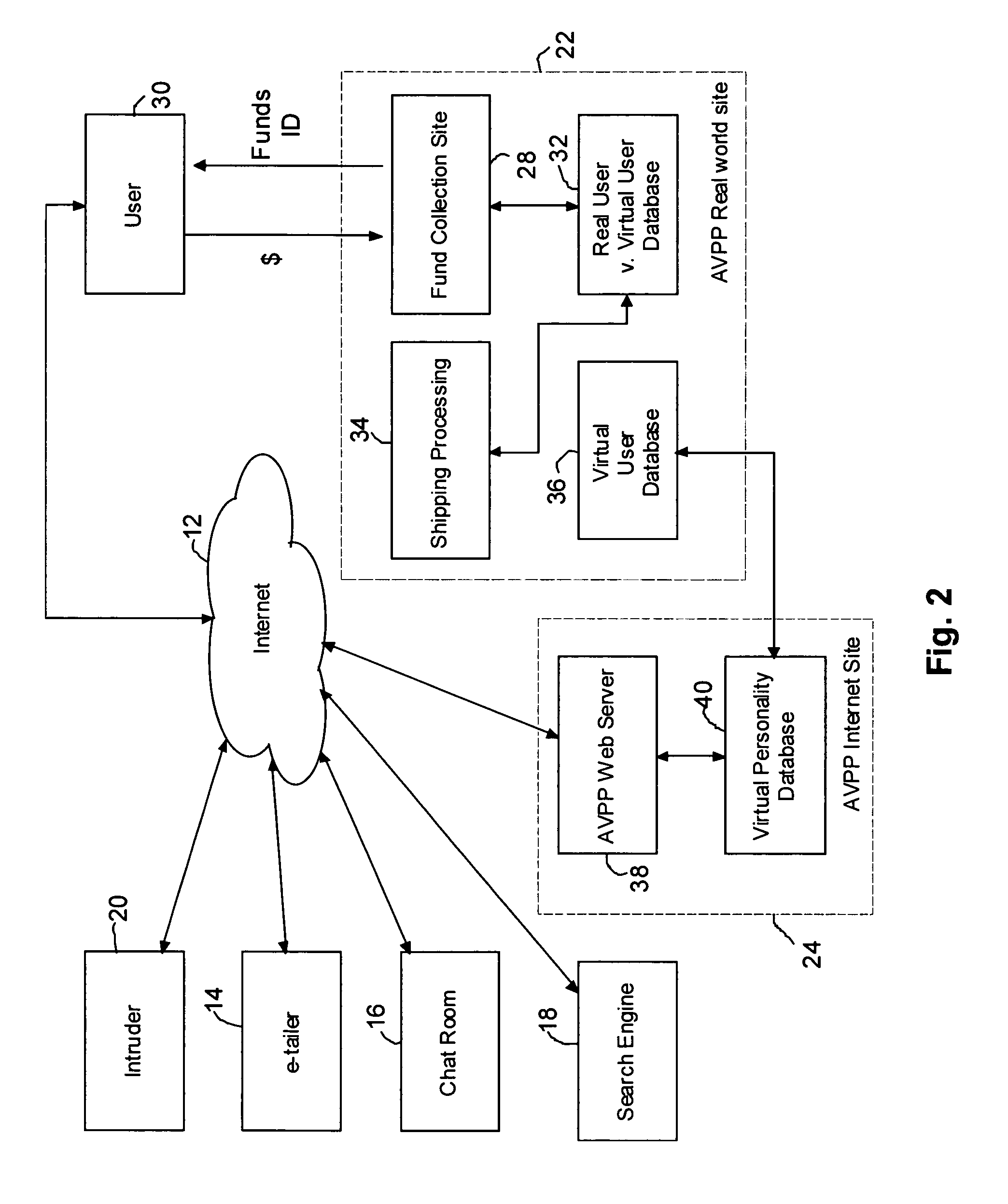Method and system for securing user identities and creating virtual users to enhance privacy on a communication network
a communication network and user identity technology, applied in payment protocols, instruments, data processing applications, etc., can solve the problems of naive internet users, large and complex website content, and steady internet use, so as to minimize shipping time and cost, efficient allocation of proper dispatch sites
- Summary
- Abstract
- Description
- Claims
- Application Information
AI Technical Summary
Benefits of technology
Problems solved by technology
Method used
Image
Examples
Embodiment Construction
[0044]The AVPP in accordance with the invention implements fundamental and revered separation between a user's real identity and the user's Internet identity (i.e., the virtual personality), whereby no information linked to the real identity ever need be communicated via the Internet. According to this concept, the AVPP preferably consists of two separate sub-systems, namely, a virtual world system and a real world system. The two sub-systems do not communicate with each other via conventional Internet connections. This concept is depicted in FIG. 1, which schematically illustrates an overview of an AVPP system in accordance with an embodiment of the present invention, operating in conjunction with a world wide computer communication system 12, such as the Internet, also referred to herein as the “Web”.
[0045]The system of FIG. 1 includes an AVPP real world site 22 and an AVPP Internet site. The AVPP real world site communicates with real user 10 (also referred to herein as user type...
PUM
 Login to View More
Login to View More Abstract
Description
Claims
Application Information
 Login to View More
Login to View More - R&D
- Intellectual Property
- Life Sciences
- Materials
- Tech Scout
- Unparalleled Data Quality
- Higher Quality Content
- 60% Fewer Hallucinations
Browse by: Latest US Patents, China's latest patents, Technical Efficacy Thesaurus, Application Domain, Technology Topic, Popular Technical Reports.
© 2025 PatSnap. All rights reserved.Legal|Privacy policy|Modern Slavery Act Transparency Statement|Sitemap|About US| Contact US: help@patsnap.com



